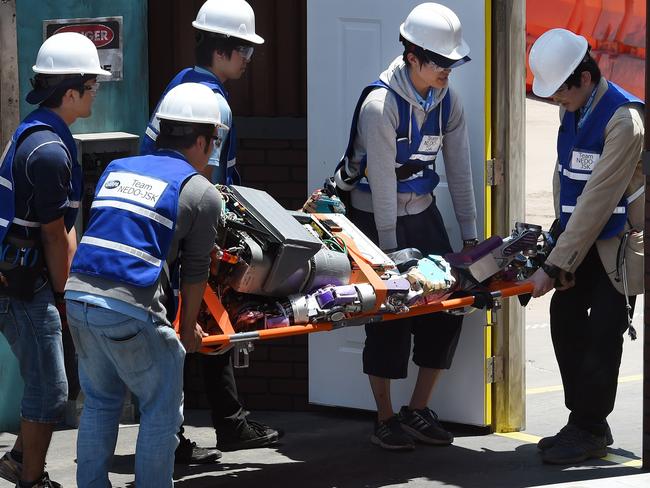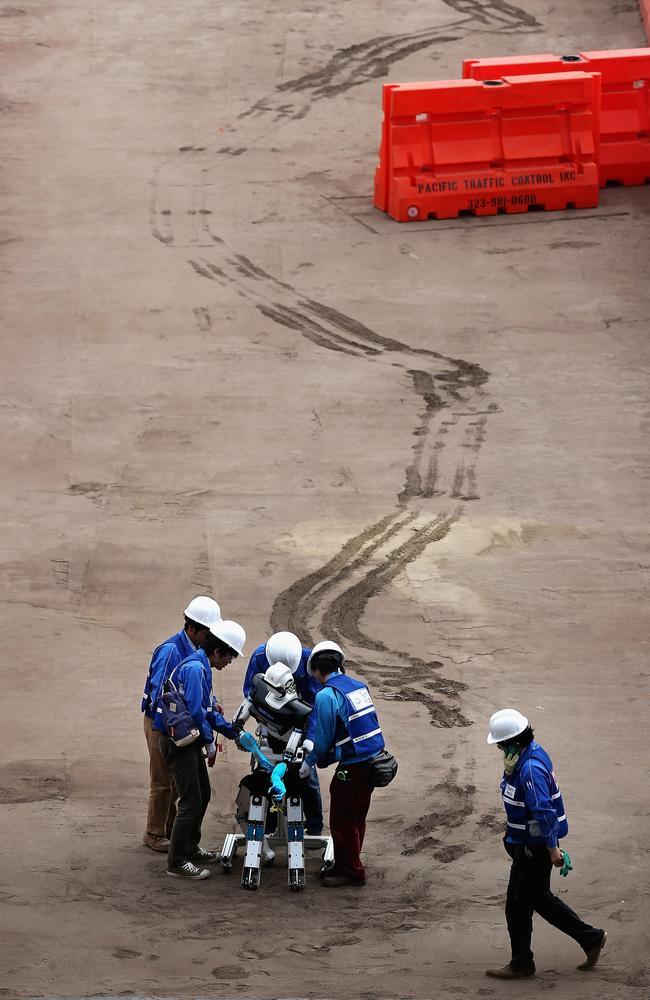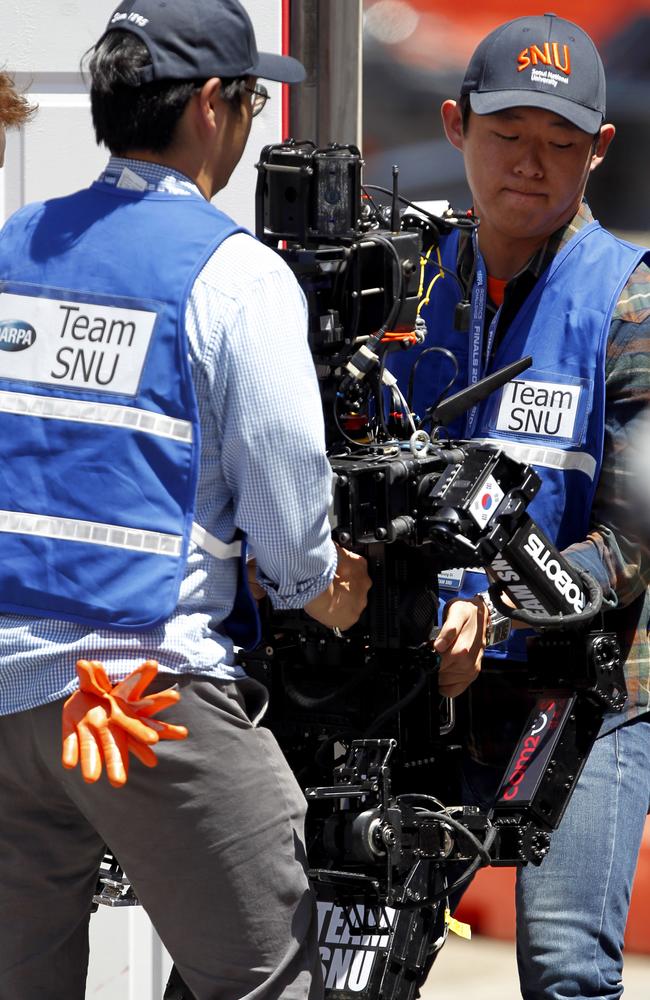DARPA robot challenge reveals we’re in no danger of a robo-apocalypse, yet
THE rise of the machines has been postponed — if we don’t laugh ourselves into oblivion! Watch the epic fails of the world’s most advanced robots as they compete in their own Olympiad.
THE rise of the machines has been postponed — if we don’t laugh ourselves into oblivion! Watch the epic fails of the world’s most advanced robots as they compete in their own Olympiad. Something tells me the time of the Terminator is still some way off.
United States defence research organisation DARPA is part way through the finals of its Robotics Challenge — a contest where 25 robots are being pitted against a series of challenges aimed at stimulating a disaster zone.

But is this really just another step towards the long anticipated robot apocalypse?
Only if they can keep their feet on the ground.
Clearly, they’re a long way off becoming our metallic overlords yet.
The motley assemblages of batteries and aluminium frames come in all shapes and sizes — from four-legged humanoids to spider-like scamp. But it seems the humanoid figure — a head, two arms and two legs — remains the dominant fashion.
This could be part of the problem.

It’s not a matter of “I’ll be back”. More, “I’ll be on my back”.
Balance, it appears, is the state-of-the-art robot’s biggest challenge.
Forget the stairs — sand seems challenging enough. Not to mention the issue of getting one’s toe stuck in a jeep’s door frame ...
And then there are doors.
Doors seem to send the robots into panic. How else can you explain their tendency to simply faint away the mere presence of one?
As for door handles: Don’t go there.

At the core of the robotic challenge is a desire to create a mechanical “first responder”, an idea first floated after the Fukushima nuclear disaster in Japan in 2011. The hope is to build an intelligent machine competent enough to enter high-risk disaster areas instead of their soft, fleshy masters.
At least until the revolution comes.

“There is a long way to go,” DARPA Robotics Challenge official Brad Tousley told AFP. “There’s fact and there’s fiction. There’s a lot of fiction out there that robots are much more capable than they really are.
“But part of DARPA’s job is to show the possible, and what we can start to do. And then often other organizations, and other countries or other companies will invest more to bring it along. But it’s our job to start that process.”

The robot Olympiad is an elimination process: Each research team gets only one chance to demonstrate their machine’s skills on the obstacle course.
If a robot topples, it can get up on its own without shame. If its human handlers have to hoist it back on its feet, the team is fined a 10-minute penalty.
The second and final round of the DARPA robotic challenge ends tomorrow morning Australian time. Watch the live stream on YouTube.




